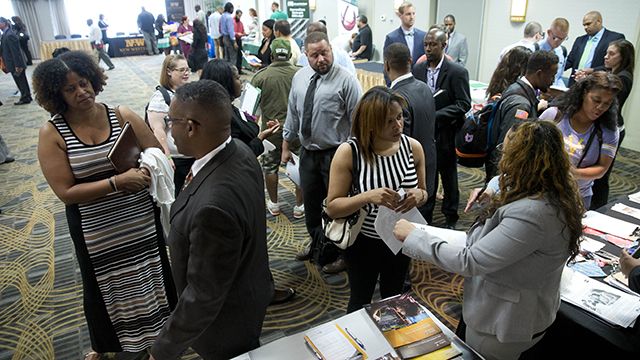This post originally appeared at TalkPoverty.org.

“How can we get more low-income adults into jobs, so they can better support their families and move up the economic ladder? … One approach to achieving this goal is through supporting subsidized jobs.” – Rep. Dave Reichert (R-WA)
This idea was a frequent refrain — repeated yesterday by Republicans and Democrats alike — at a hearing convened by Congressman Dave Reichert, chairman of the House Ways and Means Subcommittee on Human Resources.
As my colleague Rachel West put it in a column published yesterday:
“It is high time for Congress to re-examine the evidence on subsidized jobs… an effective tool for increasing economic security — and ensuring that those who have been left behind by the labor market have access to job opportunities.”
My appreciation for the power of subsidized jobs has its roots in north Philadelphia. Fresh out of law school in the fall of 2009, I was a new attorney at Community Legal Services (CLS) and the Great Recession was in full swing. Nationally, unemployment was approaching 10 percent. In Philly, unemployment was nearly 11 percent — and fully a quarter of the city’s residents were living in poverty.
As part of the American Recovery and Reinvestment Act of 2009 (aka, the stimulus package), federal funding was made available for states to establish subsidized jobs programs. In partnership with the Philadelphia Unemployment Project, we at CLS drafted a plan for what ultimately became Way to Work Pennsylvania — a statewide, subsidized jobs program that created 20,000 jobs for adults and youth around the Commonwealth.
While short-lived — the program ran from May 2010 through the funding’s expiration in September of that same year — Way to Work was by all accounts a great success. A partnership between Pennsylvania’s Department of Labor and Industry and the Department of Public Welfare, Way to Work connected low-income Pennsylvanians with private, nonprofit and public sector jobs paying up to $13 per hour. Per federal guidelines, priority populations for jobs placement included the long-term unemployed, low-income youth, welfare recipients and people with criminal records (even people with minor records, such as a summary offense or an arrest without a conviction, can face significant barriers accessing jobs).
From the start, Way to Work was a win for both struggling Pennsylvanians and employers. The Philadelphia Inquirer reported on small businesses that were able to expand by taking on Way to Work employees, alongside profiles of people like Barbie Izquierdo, a mother of two who had been been out of work for more than a year before getting a subsidized job at the Greater Philadelphia Coalition Against Hunger. Izquierdo then obtained a permanent position with the organization when one opened up. “This job has given me stability,” she told the Inquirer. “I’m living proof that Way to Work works.”
In all, 39 states and Washington, DC, launched programs, using $1.3 billion in federal funding to place some 260,000 workers into subsidized jobs — which comes to $5,000 per worker. If you think the numbers are compelling, watch the personal testimonials of workers and employers who benefited from Pennsylvania’s program.
But the clock was ticking. The federal funds were set to expire at the end of September 2010. Workers and employers banded together and lobbied Congress to extend the deadline so that the programs could continue. Governors of red and blue states alike — including then-Governor of Mississippi Haley Barbour (R) — joined the chorus calling for the funding to be extended. In Pennsylvania, people felt so strongly about Way to Work, that a large group — including several employers — hopped a bus down to Washington in the July heat to tell members of Congress what Way to Work meant to them.
Despite bipartisan support, reauthorization of the federal funding failed to advance when the Senate couldn’t muster 60 votes, and the funds expired on schedule. Most states scaled down their programs as the funding dried up.
But as the Center on Budget and Policy Priorities and the Center on Law and Social Policy point out, the legacy of these programs is a blueprint for how subsidized jobs can serve as an effective tool for boosting economic security and mobility.
As West notes, subsidized jobs do not lessen the need to raise the minimum wage and pursue job creation, but:
“…when job opportunities remain elusive for whole groups of workers — even as economic conditions improve — these workers are denied the chance to protect their families from poverty and hardship, and chart a path to the middle class. As Congress evaluates the evidence on subsidized jobs programs, our lawmakers should consider subsidized jobs as an important strategy to increase economic mobility for those workers who need to get a foot in the door.”
Let’s hope Congress takes a serious look at an idea backed by something so rare it is now considered an anomaly: strong bipartisan support.
The views expressed in this post are the author’s alone, and presented here to offer a variety of perspectives to our readers.


